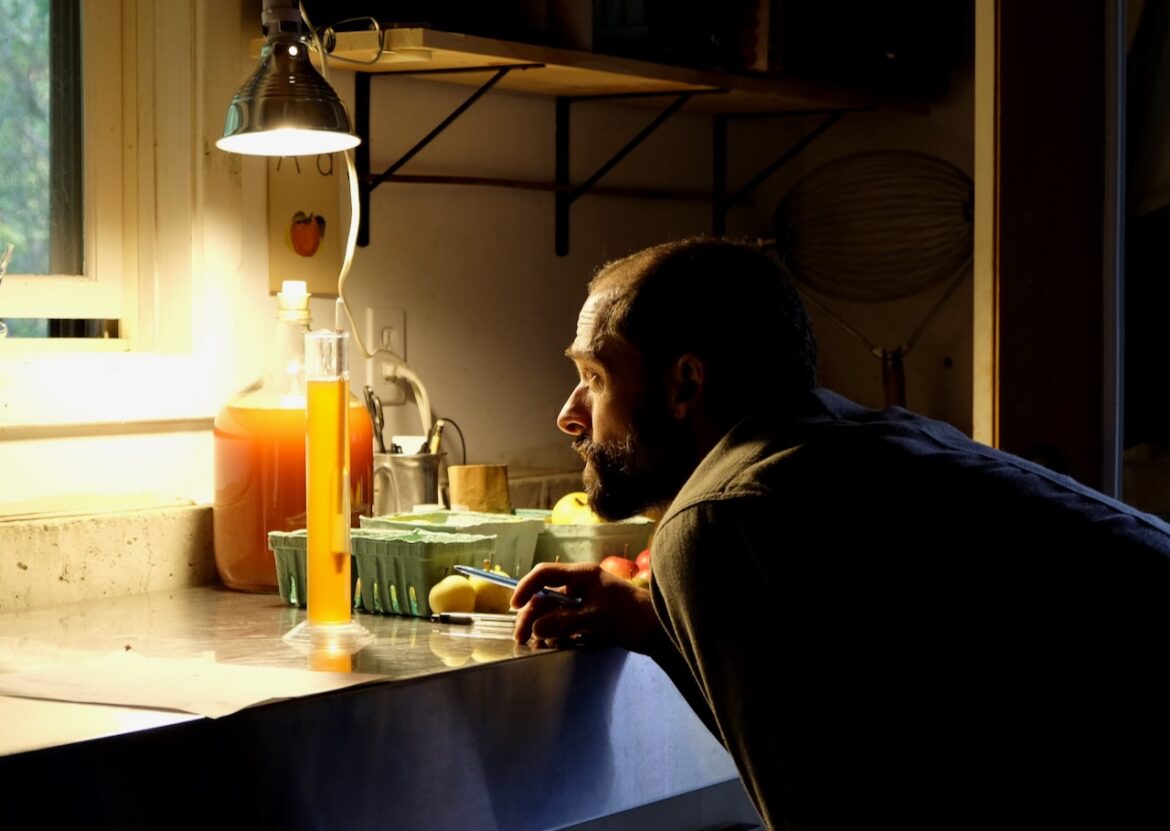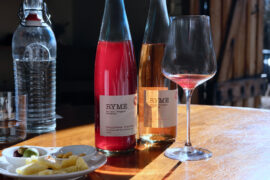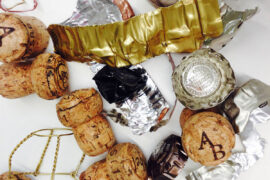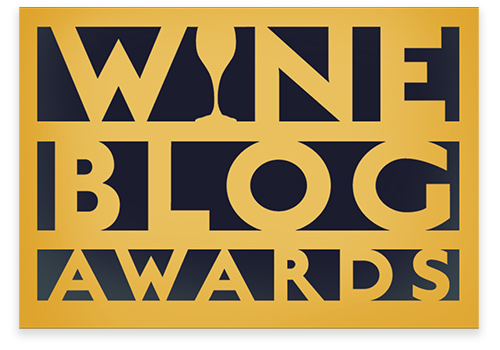Language evolves. Or rather, we evolve and our language follows. Terms flow in and out of fashion as we jettison words for outdated concepts and invent novel words for whatever’s new. We drop brewski, hooch, and sauce and add glou-glou, sessionable, natty, crunchy, and zero-zero. And we keep what remains useful; we’re not losing tannic anytime soon.
Wine communicators have made many attempts to define and codify this terminology. The goals were not only to develop a lingua franca for professionals, but also to furnish consumers with a consistent way to speak about what they’re tasting. The cider community has likewise made forays into a cider lexicon, and several Malus contributors have suggested cider draw inspiration from wine.[1] That’s understandable. Not only has wine been at this project longer, wine, as a category, feels successful and enduring. Wine has somehow maintained relevance by balancing historicity with modernity, and wine commentary, both marketing and criticism, has apparently been effective in getting people to taste. Wine seems to have done a good job of learning how to talk about itself.
But contemporary wine commentary does have several problems. It has been criticized as restrictive rather than expansive, gatekeeping rather than welcoming. Wine lexicons in particular have been rebuked as Eurocentric and exclusionary. And wine education proposes right and wrong answers to the question, “What is this wine like?”
Many in the wine community, myself included, are actively interrogating our practices and trying to improve the system. Cider can learn from these mistakes, and should.
How did wine get here? A brief history.
Over the last fifty years, wine writing has enjoyed many changes, some slow rolling, some abrupt.
During the 1970s and 1980s, critical commentary tended to emphasize wine’s overall character, origin, and context, and de-emphasize, or avoid altogether, olfactory and sensory specifics. George Tabor, the journalist on hand for the 1976 “Judgment of Paris” tasting — a catalytic game-changer in which California wines beat French wines blind, in France — overheard judges describing wines as “nervous and agreeable,” and having “a good nose but not too much in the mouth.”[2] These weren’t tasting notes, they were character sketches.
In 1983, the French enologist Émile Peynaud published Le Goût de Vin (The Taste of Wine), a text that rapidly earned respect among professionals. He included a chapter on tasting vocabulary, but notably spends more ink on terms for structure and texture than the olfactory. Peynaud was also arch about certain styles of wine writing: “any writer who talks of wines as ‘funny, amusing, jokey, coquettish, naughty’… plumbs the depths of the insignificant and gratuitous.”[3]
Frank Prial, who began a 33-year run as the New York Times wine critic in 1972, would have agreed. His focus was on context and story, not flowery language and aromatic notes. I rummaged through years of columns but could not advance beyond examples like “good chunky wine with intensity,” “bright spicy flavors,” and “wine with body and pronounced flavor.”[4]
In 1978, Robert M. Parker Jr. leapt onto the scene with a self-published newsletter, The Wine Advocate. His flamboyant writing style and lavish use of flavor descriptors were a hit with readers. Here’s an example, chosen more or less at random (they’re all like this):
La Tour-Haut-Brion’s color remains a murky garnet/purple, and an explosive nose offers up aromas of roasted meats and herbs, truffles, licorice, Asian spices, and sweet black currant fruit. Powerful, muscular, and full bodied, with considerable tannin, this profoundly rich wine is just beginning to reach its plateau of maturity, where it should remain for another 10–20 years. It is a remarkable effort![5]
Parker’s style relied heavily on descriptive metaphors and analogies (in bold above[6]). Partly due to his ballooning influence, this style began to permeate wine writing. Attention moved away from wine’s character and context (objectively verifiable facts like grape, region, makers, and making) toward its subjective or hedonic qualities (the author’s personal impressions of aroma, flavor, texture, and more). It was essentially a shift from cultural-historical context to personal context, from the tasted to the taster, from “What is this wine like” to “What is this wine like to me.” That the Me Generation propelled this shift is perhaps unsurprising.
Formal wine lexicons were likewise brewing
Meanwhile, wine institutions were developing codified tasting lexicons. The goal was to thatch out imprecision, encourage consistency, and furnish wine communicators and students with a list of definitive, universally comprehensible descriptions. These were heavily populated with flavor and aroma analogies.
In the 1980s, Ann Noble, a sensory chemist at U.C. Davis, developed a branching flavor hierarchy with increasingly precise descriptors (e.g.: Fruity > Berry > Blackberry, Raspberry, Strawberry, Black Currant). She arranged the terms in a circle to create the Aroma Wheel, which became widely adopted and imitated.
The Wine and Spirits Education Trust (WSET) developed a similar tiered lexicon, as did the Court of Master Sommeliers and the Master of Wine program. The lists are long, ultra-precise, and hyper-specific, and make distinctions not only between, for example, many different types of citrus fruits but also whether it’s juice or zest.
Some problems
Although the formal lexicons strove for consistency and universality, their reference materials were largely based on items from the Global North, and Europe in particular. Fruits like gooseberry, cassis, quince, strawberry, and cranberry are unfamiliar to swaths of the world’s population, as are many European-style dairy products and baked goods. When these lexicons do get re-cast in other languages, the terms are often transliterated rather than reworked into local flavors.
Nonetheless, wine students worldwide must memorize then apply these terms correctly to pass their tests. South African wine professional Tinashe Nyamudoka recounts the mental gymnastics required for blind tasting. “If I smell hute, which is a water berry — you find it mostly along the rivers in Zimbabwe — I used to associate it with Pinot noir.”[7] Once he’d decided the wine was Pinot noir, he could write blackberry, the “correct” tasting note.
Some lexicon projects have arisen especially in Asia to address the problem. Wine educator Jeannie Cho Lee MW has developed a vocabulary based on flavors of Chinese cuisine, but she still encourages Asian students to learn both, because “one set of descriptors will enable you to better recall and remember familiar flavours while the other will get you through wine exams.”[8] These examples and more have spurred calls to decolonize wine.[9]
Further, the fashion for metaphor and analogy has sometimes led to offensive tropes. Parker’s “Asian spices” in his note above is one; also terms like exotic, rustic, heritage,[10] Old World, sexy, masculine/feminine, and similar gendered or othering personifications.
And all of this production rests a notion that wine’s most salient characteristics can be perceived by the sensorium: by seeing, smelling, tasting, swallowing — the hedonic phase of the product’s lifecycle. That emphasis ignores wine’s broader cultural impact and arguably more interesting story arcs.
Take-aways for cider
Cider can learn from these developments to build approaches that are more welcoming, diverse, and inclusive. Some thoughts:
First, don’t rush toward formalizing a cider lexicon. Cider is a rapidly evolving category, and so are cider drinkers. A lexicon, even for educational purposes, may discourage innovation by enforcing strict norms. Instead, encourage tasters to dig deep and get creative, to draw upon personal flavor memory and cues that invite discussion about why they feel meaningful. This will encourage a diversity of voices and perspectives and sidestep questions of “correct” and “incorrect” terms.
Also, don’t over-emphasize the product’s olfactory qualities. Notes packed with elaborate aroma descriptors are often short on the facts that can connect directly with readers. Taste is subjective; you get “honey,” I get “honeysuckle,” but neither is necessarily this cider’s most important attribute. That may be a storyline about its maker, aspects of the orchard, notes on its technique, or foods that might pair well. Writers will have to do their research.
On the other hand, continue to work on taxonomy. Expand efforts to classify and define cider by origin and process and to educate about how these create a diversity of beverages. Many consumers in North America are still puzzling over the category, and a broader understanding will benefit everyone. Just don’t get too tripped up in the terminology.
Finally: guard against gurus. Given the current media landscape, it’s unlikely that we’ll see, as we did in wine, the emergence of powerful commentators who hold sway both in the market and among peers. Still, anyone with hiring authority in cider communications, journalism, marketing, PR, tasting room sales, and distribution should foster a diverse workforce that draws people from varying fields and backgrounds.
As a writer, I am fixated on language, but I also know that sometimes words stand in the way of progress. My best advice to cider is to keep it loose and let a thousand voices bloom. This is also the advice I give to wine.
Editor’s note: This essay first appeared in Malus, vol. 22, 2023, with the title “Cider Can Learn From Wine’s Lexical Mistakes.”
Notes
[1] See especially: Bhatt, Soham. “On Classifying Cider.” Malus, Issue 12, 2012. Pucci, Dan. “Focus on the Fruit: Language and Cider.” Malus, Issue 13, 2021. Brady, Richie. “A Systematic Approach to Tasting Cider Within Cider’s Lexicon.” Malus, Issue 15, 2021. Pucci, Dan. “Death to Styles.” Malus, Issue 18, 2022.
[2] Taber, George. “Judgment of Paris.” Time, 7 June 1976.
[3] Peynaud, Émile. The Taste of Wine: The Art and Science of Wine Appreciation, trans. By Michael Schuster. San Francisco: The Wine Appreciation Guild Ltd., 1987.
[4] Prial’s Wine Talk columns are available in the online archives of the New York Times.
[5] Parker, Robert M. Jr. Bordeaux: A Comprehensive Guide to the Wines Produced from 1961 to 1997, 3rd ed. New York: Simon & Schuster, 1998.
[6] The metaphors are terms like “muscular” and “rich,” while the analogies are words like “herbs, truffles, licorice.”
[7] Robinson, Jancis, MW. “The Extraordinary Story of ‘Blind Ambition,’ With Special Guest Tinashe Nyamudoka.” The Jancisrobinson.com Podcast, Season 1, Ep. 2, 19 December 2022.
[8] Cho Lee, Jeannie, MW. “A New Language of Wine.” Jeanniecholee.com, 20 May 2011.
[9] See especially de Leon, Miguel. “It’s Time to Decolonize Wine.” Punch, 25 June 2020.
[10] See especially Maki, Olivia. “Whose Heritage? Malus, Vol. 5, 2019.




